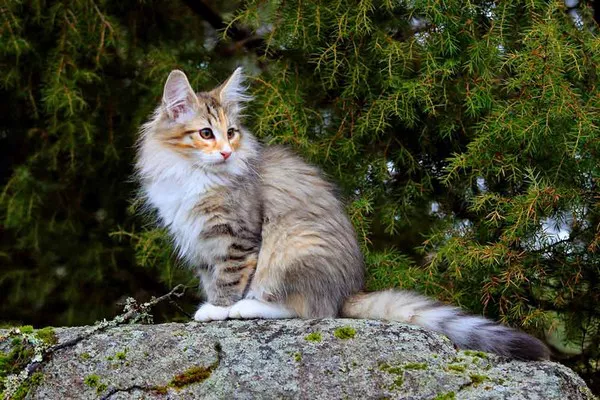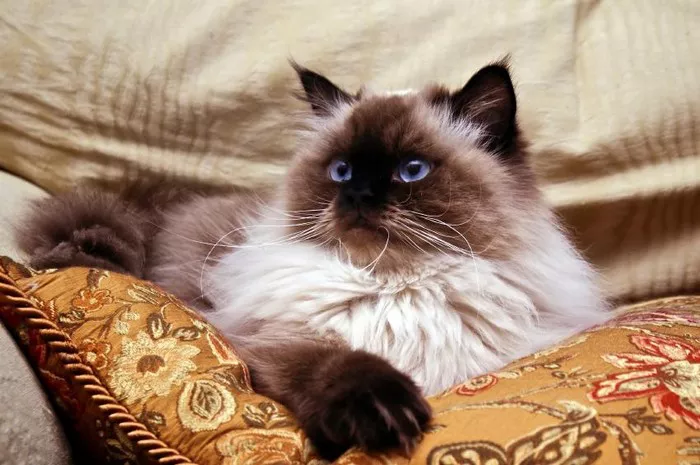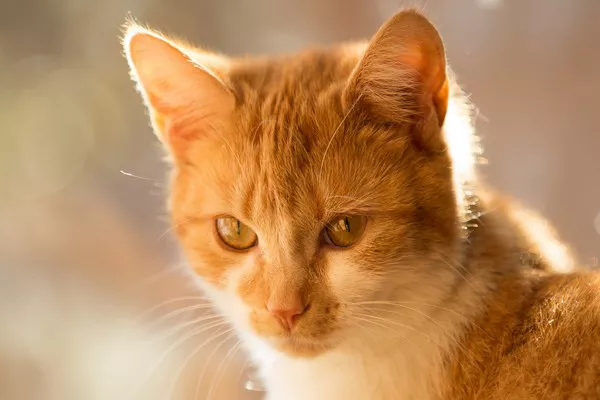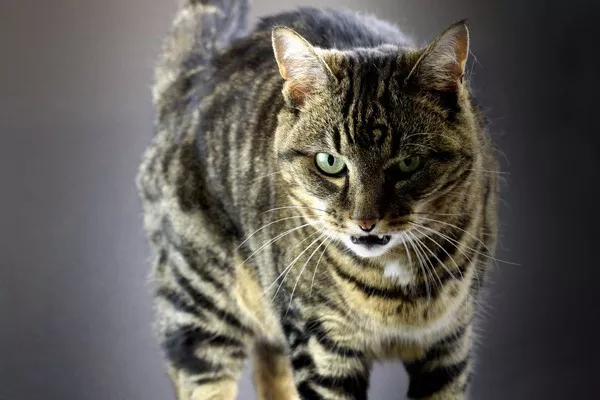The Norwegian Forest Cat, often referred to as the “Wegie,” is a breed known for its sturdy build, lush coat, and friendly demeanor. This article provides an in-depth look at the geographical spread and historical roots of the Norwegian Forest Cat, tracing its journey from the cold forests of Norway to various parts of the world. We will explore the factors that have influenced its distribution and the current status of this majestic cat breed in various regions.
Historical Roots of the Norwegian Forest Cat
Originating from the Nordic Wilderness:
The Norwegian Forest Cat is believed to have originated in Northern Europe. This breed has been a part of Norse mythology and culture, often depicted as a mystical creature roaming the Norwegian forests. Historical references suggest that these cats have been around since the Viking era (around 800-1000 AD), where they were highly prized for their hunting skills and ability to withstand harsh climates.
From Myth to Domestication:
It is thought that these cats were domesticated by Viking settlers and farmers due to their utility in controlling vermin populations. Over the centuries, the Norwegian Forest Cat evolved to develop a thick, water-resistant coat, long bushy tail, and robust physique, making it ideally suited for the cold Scandinavian weather.
Global Recognition and Breeding:
The breed was first officially recognized in Norway in the 1930s but gained international recognition only in the 1970s when it was registered in Sweden and subsequently in other European countries and North America. This marked the beginning of a structured breeding program aimed at preserving the breed’s characteristics.
The Spread of Norwegian Forest Cats Around the World
Norwegian Forest Cats in Scandinavia:
Unsurprisingly, Norwegian Forest Cats are most commonly found in Norway, Sweden, and Denmark. They are not only popular pets but also part of the region’s cultural heritage. The breed is celebrated for its ability to adapt to the local environment and is often featured in Scandinavian folklore and literature.
Expansion to Western Europe:
From the 1970s onwards, Norwegian Forest Cats spread to other parts of Europe, including the UK, France, and Germany. Cat enthusiasts and breeders were drawn to their unique appearance and gentle temperament, which contributed to the breed’s popularity across the continent.
Popularity in the United States:
The Norwegian Forest Cat was introduced to the United States in the late 1970s. The breed was officially recognized by the Cat Fanciers’ Association (CFA) in 1994 and has since become a beloved pet in many American households. The adaptability and sociable nature of the Wegie, as they are affectionately known, have made them a popular choice for families and singles alike.
Presence in Asia and Beyond:
In recent years, the Norwegian Forest Cat has also made its way to Asian countries such as Japan, where it is appreciated for its majestic appearance and playful personality. The breed’s popularity continues to grow globally, with breed clubs and organizations promoting its welfare and breed standards.
Conservation and Breed Preservation Efforts
Challenges in Breed Preservation:
Despite its popularity, the Norwegian Forest Cat faces challenges such as maintaining genetic diversity and breed standards. Inbreeding and crossbreeding with other cat breeds can dilute the genetic traits that make the Norwegian Forest Cat unique.
Role of Breed Clubs and Associations:
Breed clubs and associations worldwide play a crucial role in the conservation of the Norwegian Forest Cat. These organizations work to promote responsible breeding practices, maintain breed standards, and provide education about the breed’s care and characteristics. They also organize events and shows that help to raise awareness and appreciation of the breed.
Breeding Programs and Genetic Health:
Several breeding programs have been established to preserve the health and unique characteristics of the Norwegian Forest Cat. These programs often involve careful selection and genetic testing to ensure the health and vitality of future generations. This is crucial for reducing the incidence of genetic disorders and ensuring the breed’s long-term survival.
Cultural Significance and Contemporary Status
Symbolic Importance in Scandinavian Culture:
The Norwegian Forest Cat holds a special place in Scandinavian culture, symbolizing ruggedness, independence, and a deep connection with nature. The breed is often celebrated in arts and cultural festivals, highlighting its importance in Nordic folklore.
Modern-Day Popularity and Trends:
Today, the Norwegian Forest Cat enjoys widespread popularity due to its striking appearance, friendly nature, and adaptability to various living environments. Its ability to form strong bonds with humans makes it a favored choice for a family pet.
Conclusion: Celebrating the Norwegian Forest Cat
The Norwegian Forest Cat is a breed that combines beautywith resilience. From its origins in the cold forests of Scandinavia to its presence in homes around the world, the Norwegian Forest Cat has captured the hearts of many. Through continued conservation efforts and responsible breeding, this majestic breed will continue to thrive and enchant future generations. Whether in its native land or abroad, the Norwegian Forest Cat remains a testament to the enduring appeal of natural beauty and companionship.

























